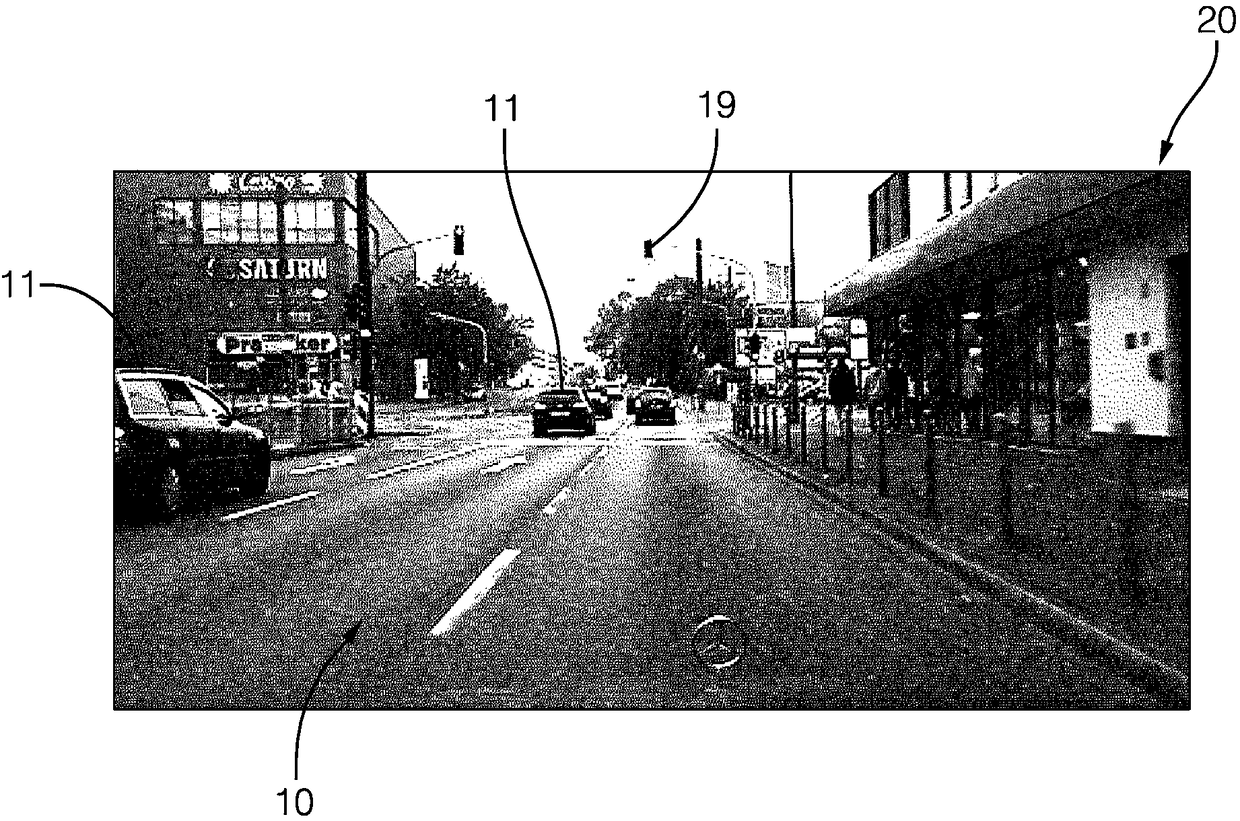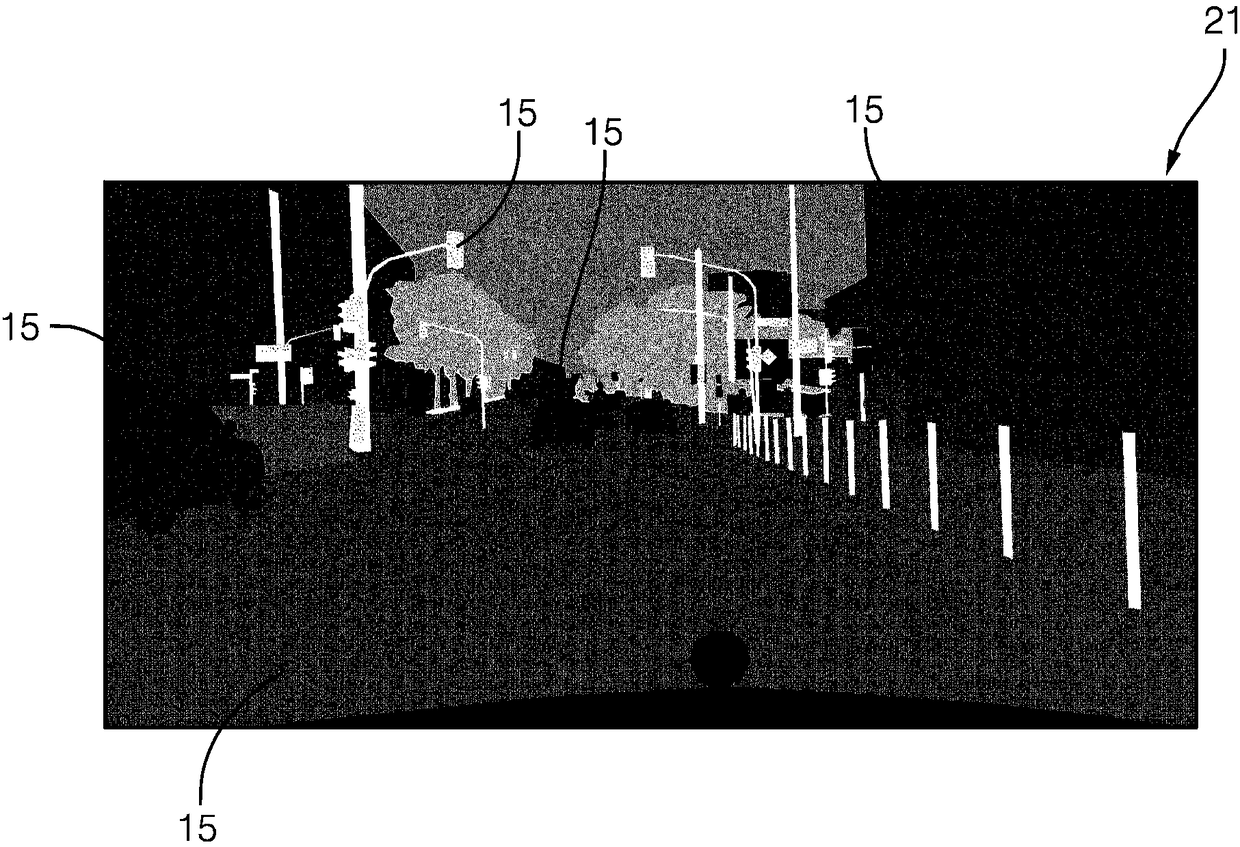A method for the semantic segmentation of an image
A semantic segmentation, image technology, applied in image analysis, image enhancement, image communication and other directions, can solve problems such as the inapplicability of convolutional networks
- Summary
- Abstract
- Description
- Claims
- Application Information
AI Technical Summary
Problems solved by technology
Method used
Image
Examples
Embodiment Construction
[0038] exist figure 1 In , a raw image 20 captured by a digital camera mounted to a motor vehicle is shown. Image 20 included in figure 1 A two-dimensional arrangement of individual pixels that are not visible in . In the original image 20 , various objects of interest such as a road 10 , a vehicle 11 , and a traffic sign 13 can be recognized. For autonomous driving applications and advanced driver assistance systems, computer-based understanding of the captured scene is required. One means for achieving this automatic scene understanding is semantic segmentation of images, where each pixel is labeled according to a semantic category such as "road", "non-road", "pedestrian", "traffic sign", etc. exist figure 2 , as the original image 20 ( figure 1 ) results of semantic segmentation, which exemplarily shows the processed image 21. Semantic segments 15 of the processed image 21 correspond to different categories and are displayed in different colors or gray scales.
[00...
PUM
 Login to View More
Login to View More Abstract
Description
Claims
Application Information
 Login to View More
Login to View More - Generate Ideas
- Intellectual Property
- Life Sciences
- Materials
- Tech Scout
- Unparalleled Data Quality
- Higher Quality Content
- 60% Fewer Hallucinations
Browse by: Latest US Patents, China's latest patents, Technical Efficacy Thesaurus, Application Domain, Technology Topic, Popular Technical Reports.
© 2025 PatSnap. All rights reserved.Legal|Privacy policy|Modern Slavery Act Transparency Statement|Sitemap|About US| Contact US: help@patsnap.com



